Some way or another, if you travel long enough, you are bound to meet the Travel Fairy, who I’ve come to define as a person who can take on any age, any gender, any voice, any appearance, you name it, but this person comes into your life to either take you on a journey or send you on one yourself. I want you to think long and hard about your traveling days, your various experiences in the big world out there. What did your travel fairies look like? Where did they take you?
Maybe they looked like this?
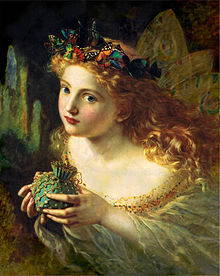
or perhaps this?

(I’m sure she’s traveled far and wide)
or, if you’re very lucky—this:
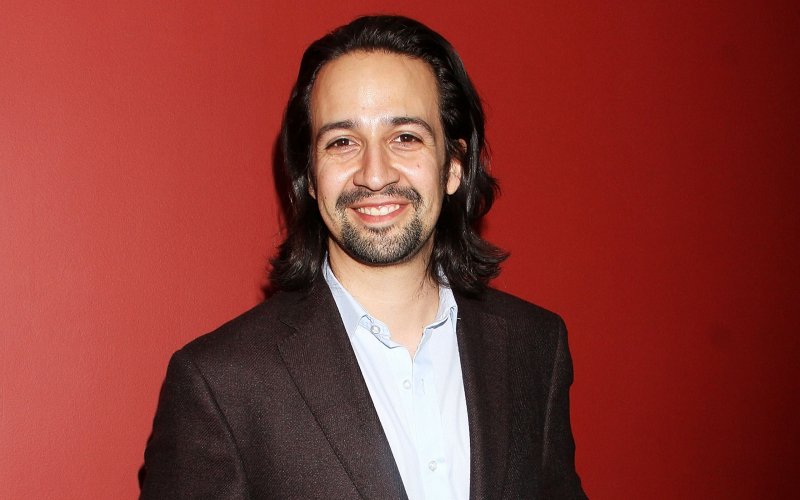
On my final day in Okayama, Japan, my travel fairy came in the form of a Chinese woman in her late 20s/early 30s. This version of my travel fairy sat down next to me at the breakfast buffet in my hotel that Saturday morning and just after finishing a piece of sushi said to me, “I really like your shoes.” This started a labyrinth of conversation that guided us around a few stray corners, and up against a few dead ends, until we realized: she worked five floors above me in the same building in Tokyo for a different department of a company that I used to work for, and the only reason she was there was because of an earthquake that had re-routed her flight the day before to Okayama. Talk about the travel fairy making special accommodations just to introduce me to the next leg of my journey in the Okayama area.
And just where did the travel fairy want to send me?
To a town called Kurashiki that was only fifteen minutes away on the local train from Okayama station. Apparently, Kurashiki had a lovely canal and an old merchant quarter that the town had done its best to preserve known as the Bikan historical district, along with a museum that I shouldn’t miss if I loved art, as I’d been telling her about my recent travels to Naoshima.
Kurashiki—More Than Might Expect
I’ve been traveling long enough that those Travel Fairies who come into your life know what they’re talking about. The only question is what you’ll be missing out on if you don’t follow their advice.
A few hours later, I found myself on the JR Sanyo train line (fully covered by those with JR Rail pass) paying 320 yen and riding for 15 minutes from Okayama station to reach Kurashiki station (note: for those taking the JR Sanyo Shinkansen line, there is a stop called Shin-Kurashiki that is about 9 km from the city center of Kurashiki, which also connects to Kurashiki via the JR Sanyo line in about ten minutes).
When I got out of Kurashiki station, it honestly didn’t look like anything special. It had the same stores just outside of the station that you can see at most suburban train stations in Japan including pachinko parlors. However, if you head south from the station and find the covered shopping street parallel to the main street of Motomachi-dori, it will become more and more evident that Kurashiki is several notches above your average tourist destination, as many of the shops even seem to make a strong effort to maintain a sense of a Japan from a time gone by, and focus on selling locally made crafts rather than imports from other countries.
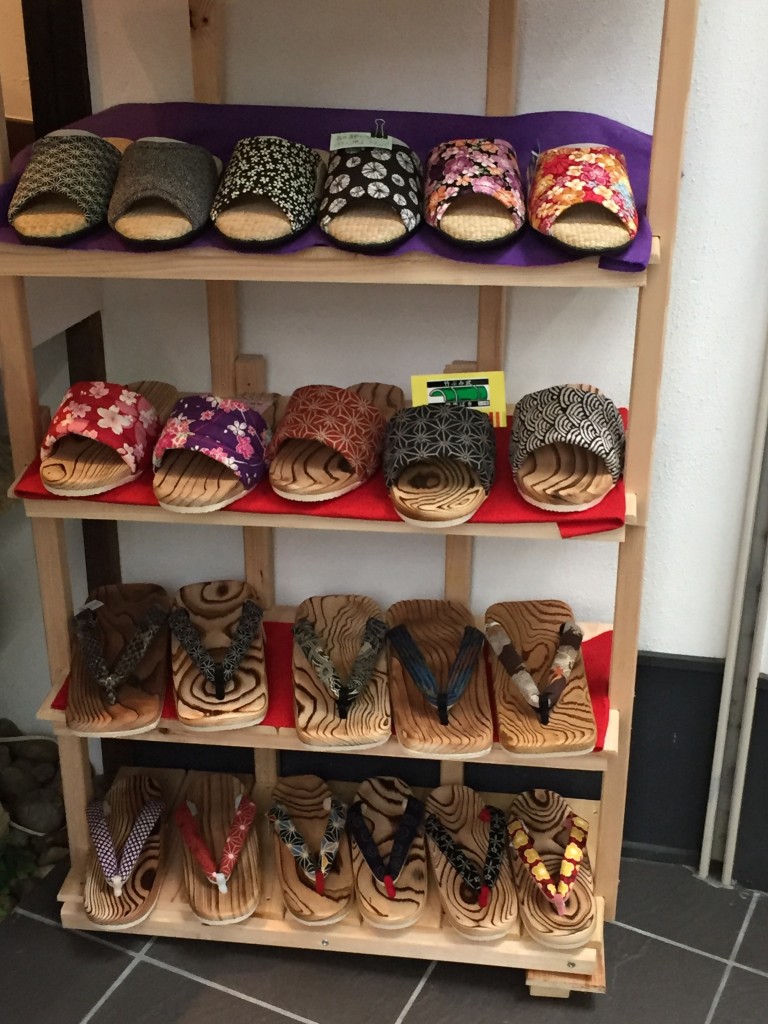
The shopping street on the way to the historical district
When I finally reached the part of my Google Maps that told me that I had reached the Bikan historical district, I truly had to stop, sit down on one of the benches along the canal and just take everything in.
In the Edo Period (1603-1867), canals were built in Kurashiki as an important stop along the distribution route for rice during the time of the shogunate (a ruling feudal military government that ruled Japan from 1185 to 1868), and Kurashiki was named after the traditional warehouses from the 17th century known as kura (倉) painted white with black tiles.

Kura, or traditional warehouses, which stored rice in the Edo era. Part of the historical district in Kurashiki
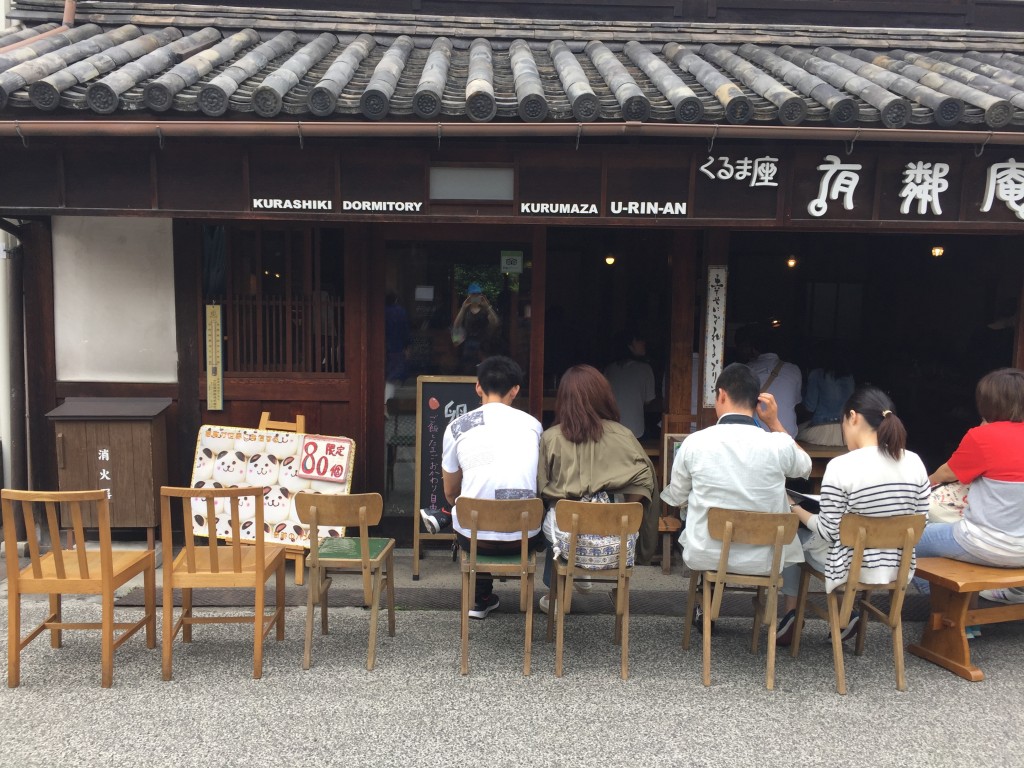
Waiting for some of that fruit parfait goodness – Love those roof tiles!
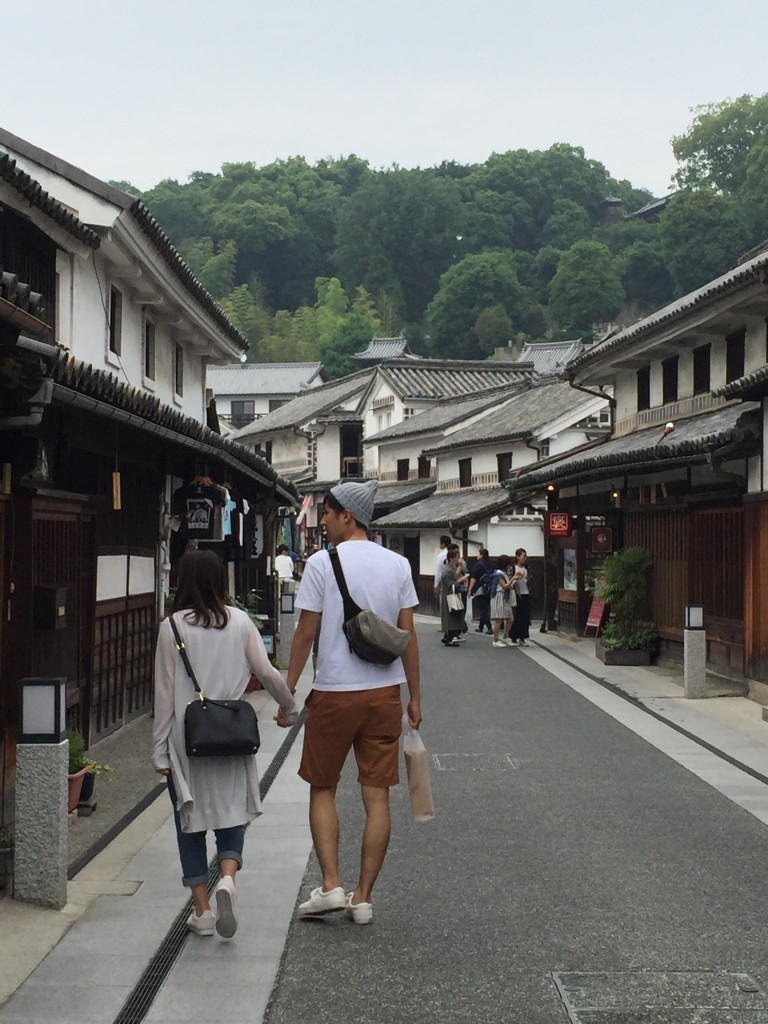
Makes for a fantastic weekend getaway
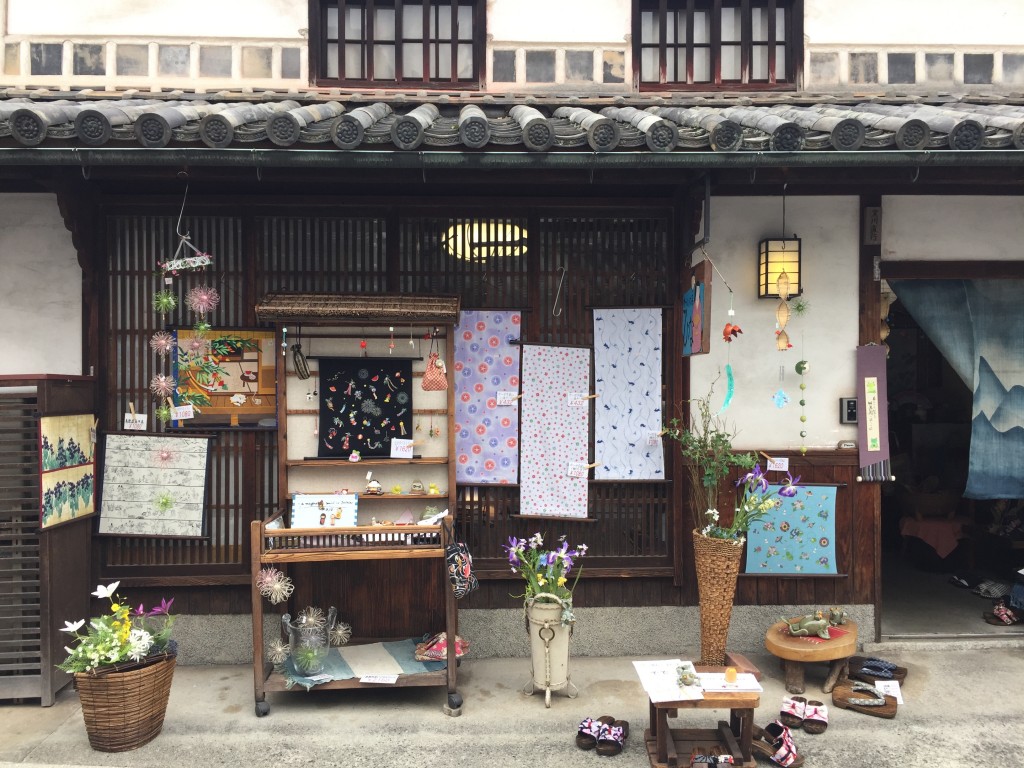
Keeping it crafty in the Bikan historical district of Kurashiki
The canals were built to help boats and barges navigate from these “kura” where the rice would be stored to the port. Today, many of the traditional storehouses have been converted into inns, cafes, and boutiques. Tourists looking for the charm of an earlier time, with none of the commercial establishments so common near the train station, can find it in the weeping willows checking out their reflections in the canal, boats full of tourists wearing conical hats, and shops promising the best fruit parfaits in town, with white peaches and muscat grapes being the local specialties, while still allowing for couples young and old to enjoy the bridges, stonework, and thoughtful design of days gone by. In total, there are about eight streets that one can walk around in in this merchant quarter.
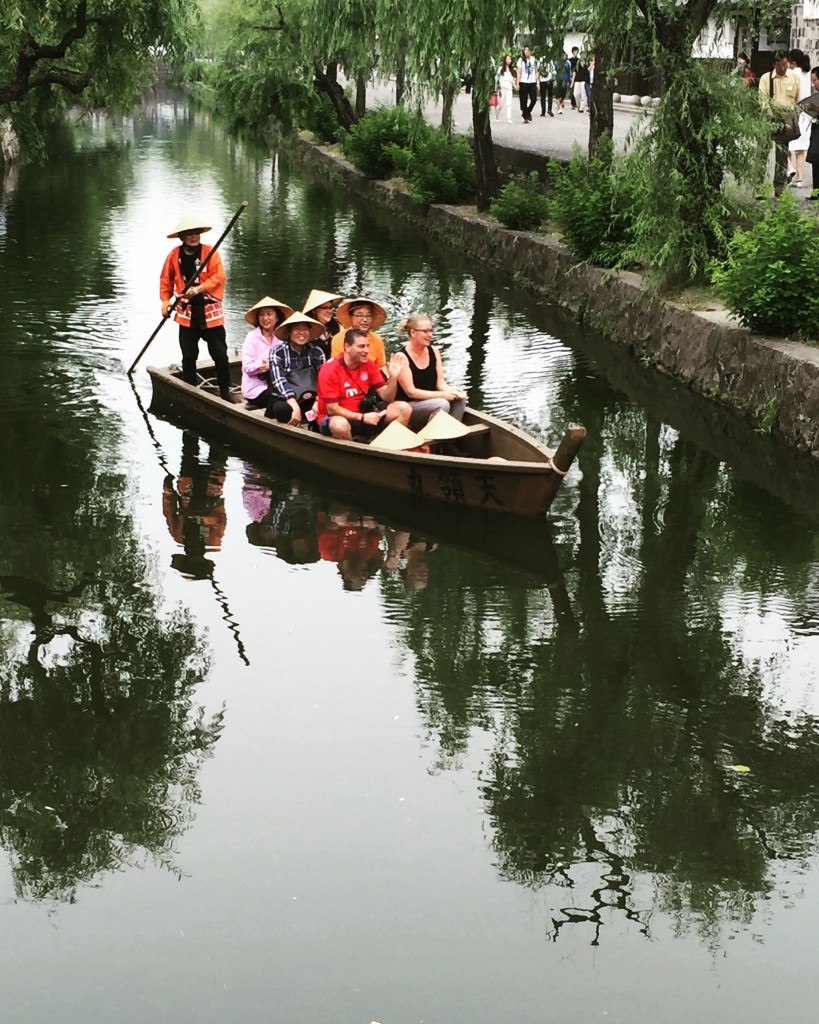
Who doesn’t love a conical hat? These two!
And the First Western Art Museum in Japan Award Goes To…
Kurashiki wouldn’t have half off of its charm, however, if it weren’t for a building that sits just off a bend in the canal across from the main canal bridge trying its best to look like a Greek temple. This Greek Temple is, in fact, the Ohara Museum of Art, opened in 1930, and the first Western collection of art to be permanently exhibited in Japan.
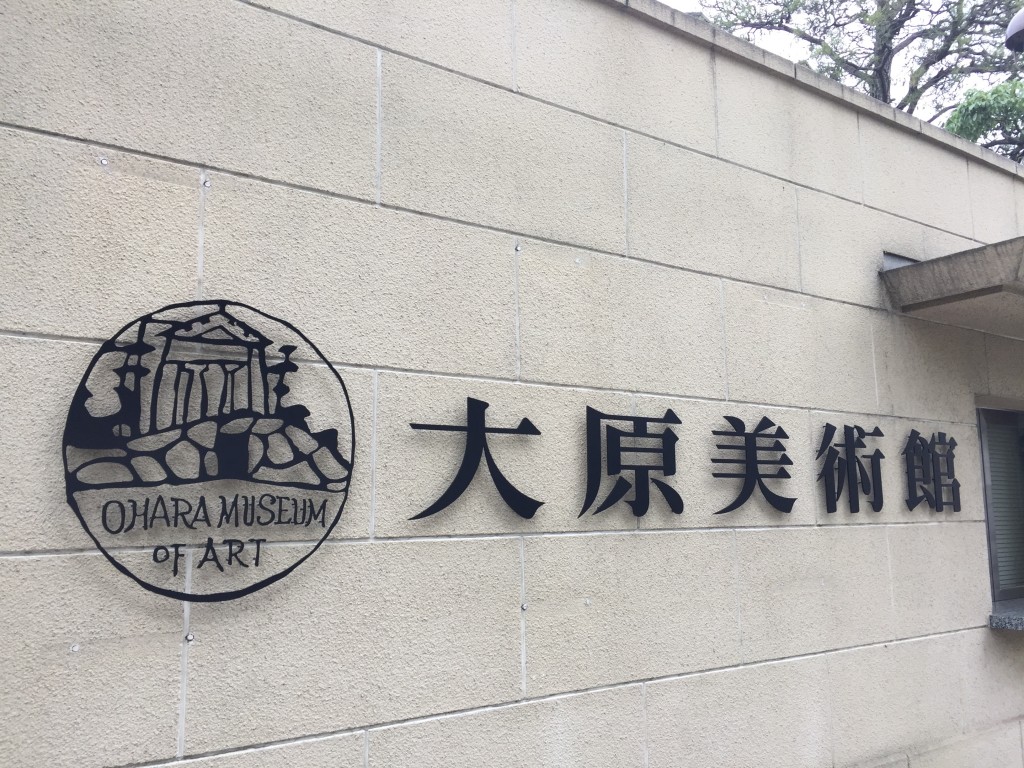
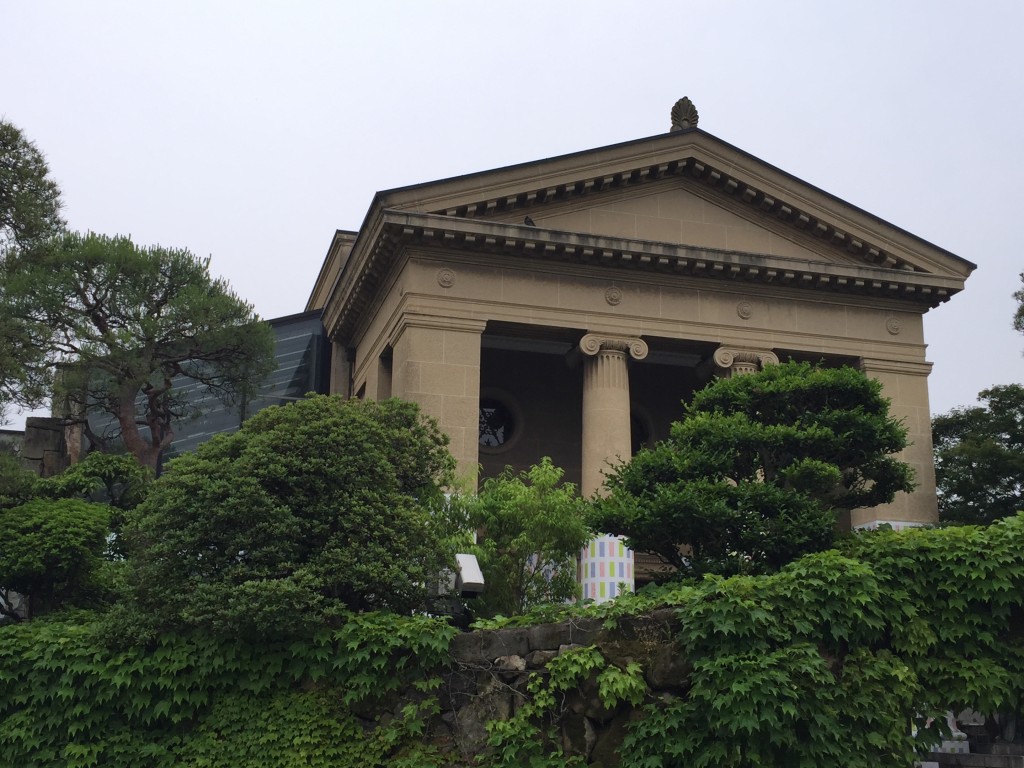
The first glimpse of the Ohara Art Museum
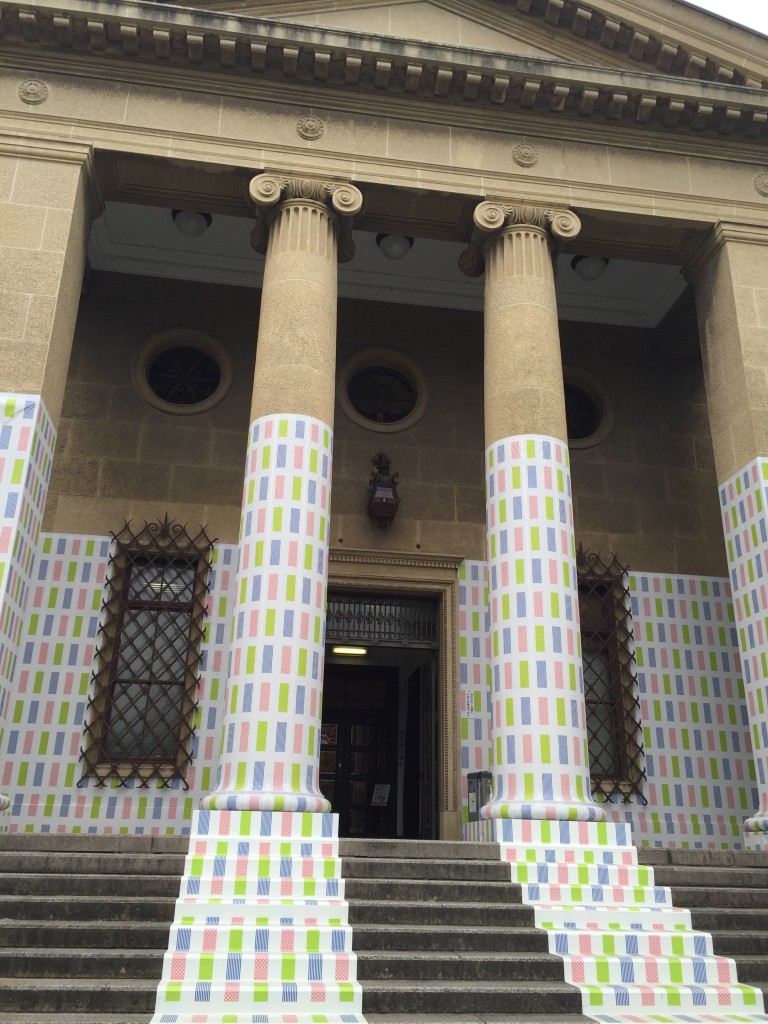
The Main Gallery of the Ohara Art Museum (all dressed up for a marketing campaign for a local washi tape producer)
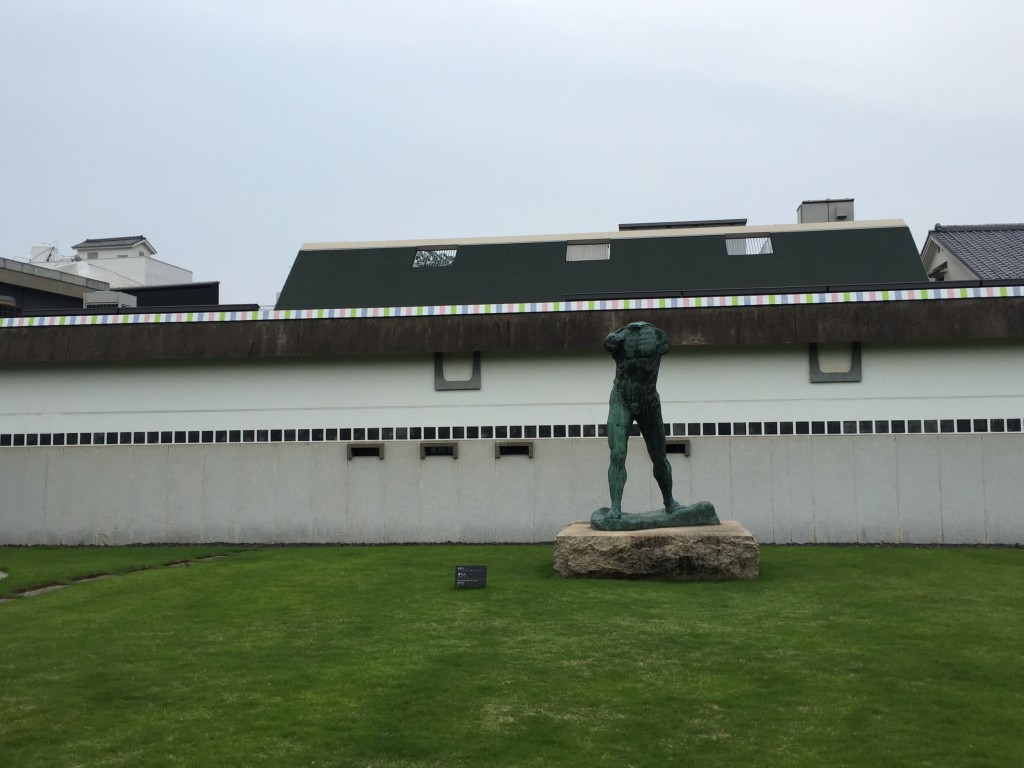
Well Hello, Rodin!
The idea for the Ohara Museum came from a Japanese artist named Torajiro Kojima, whose work was very much respected by a prominent industrialist named Magosaburo Ohara, who ran a Kurashiki spinning company along with several other companies. Impressed by Kojima’s artistic talent, Ohara supported Kojima’s proposal to travel to Europe in the 1920s and collect distinguished works of Western art to “inspire not only artists’ but ordinary people’s love of art.” Kojima’s ended up traveling around Europe twice, often meeting with the artists directly to acquire beloved paintings for the Ohara collection. Kojima even met with Claude Monet himself in 1920 and Monet, who had been inspired by the colors of the Japanese ukiyoe style and loved Japan so much that he had a Japanese garden in his home, told Kojima to come back in one month’s time, as he was working on a big project and wanted to choose the right painting for the museum. One month later, Kojima was able to purchase a painting from Monet’s “Waterlilies” collection and bring it back for the museum collection. During this time, Kojima also selected paintings from El Greco, Paul Gauguin, and Henri Matisse. He also traveled to Egypt, Korea, and China to collect antiquities to showcase the origins of Western and Eastern cultures.
Sadly, Kojima died in 1929, and Ohara pushed forward to open the Ohara Museum of Art one year later to commemorate him, initially only showing French paintings and sculptures of the 19th and 20th century. Today, however, the Ohara Museum of Art has expanded to include an Annex building which displays Japanese Modern and Contemporary Art (something not always easy to find in other museums around the world), a Craft Art and Asian Art gallery and the Torajiro Kojima Memorial Hall, included in the museum’s admission fee of 1,300 Japanese yen but actually a five minute walk away in an old brick cotton mill that has since been converted into an entertainment complex.
The Ohara Museum of Art, I can say, is truly something special. I have only seen the work of so many renowned artists under one roof in places like the Louvre or the Hermitage in St. Petersburg, Russia, not a small Japanese city that most people outside of Japan have never heard of. If you go, definitely give yourself a solid three hours minimum to listen carefully to the audio guide and walk slowly through all of the buildings. You are guaranteed to come away with a greater appreciation for the way in which Western and Eastern art varies and the passion that these artists infused in their work. The stories of how the art was obtained by Kojima is worth the price of a ticket alone.
Feeding My Fruit Obsession
After an inspiring trip to an incredible art museum, I recommend a stop at Kurashiki Momoko (address: 倉敷市本町4-1(倉敷珈琲館 右隣)), a farm direct outlet run by the Okayama Prefecture Vegetables and Fruits Sales Group that serves amazing fruit parfaits on its café on the second floor full of wooden furniture to keep the traditional in mind. I ended up getting a mango dessert to go and sitting on a bench along the canal, as the white peach was sold out for the day.

The perfect summer afternoon
It was a fabulous end to an excellent detour courtesy of my travel fairy and makes me wonder when I will meet the travel fairy again, and where she (he?) will guide me next. I can’t wait, and I’ll be ready.
For more on the Ohara Art Museum, please click on the museum’s link here. The English version is a bit outdated. The museum is open from 9am-5:30pm but is closed on Mondays except Mondays that are National Holidays. The museum is also closed from December 28-31.
Ivy Place is also a nice place to visit in Kurashiki (it even includes a Piggy Bank Museum!) and is located at the edge of the historical district. For more information, click here.
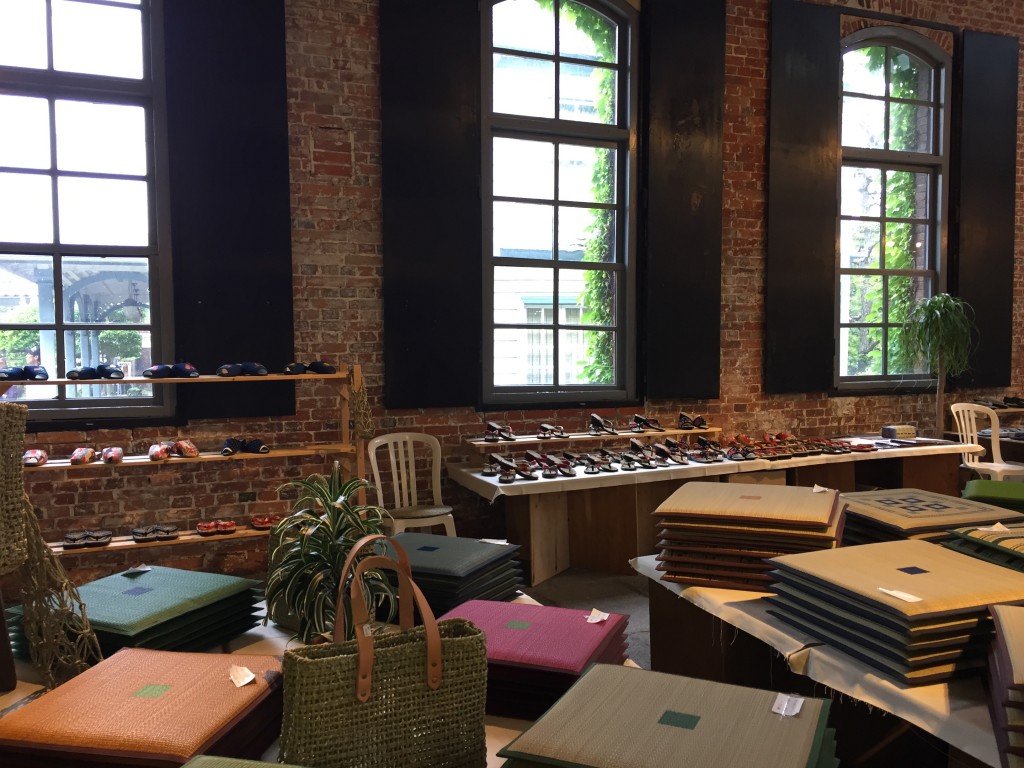
A bit of shopping in Ivy Square – also a very nice area


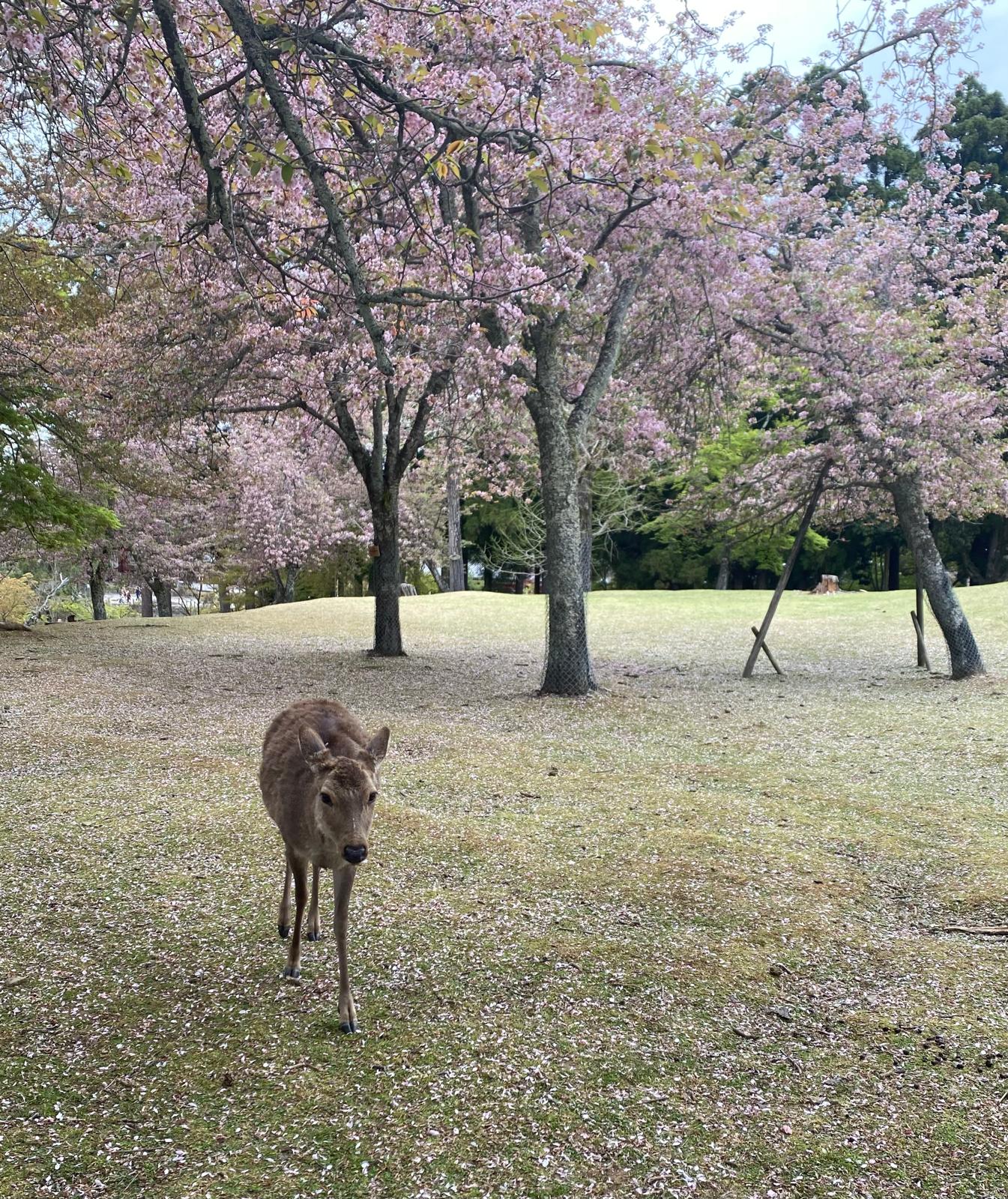
0 Comments